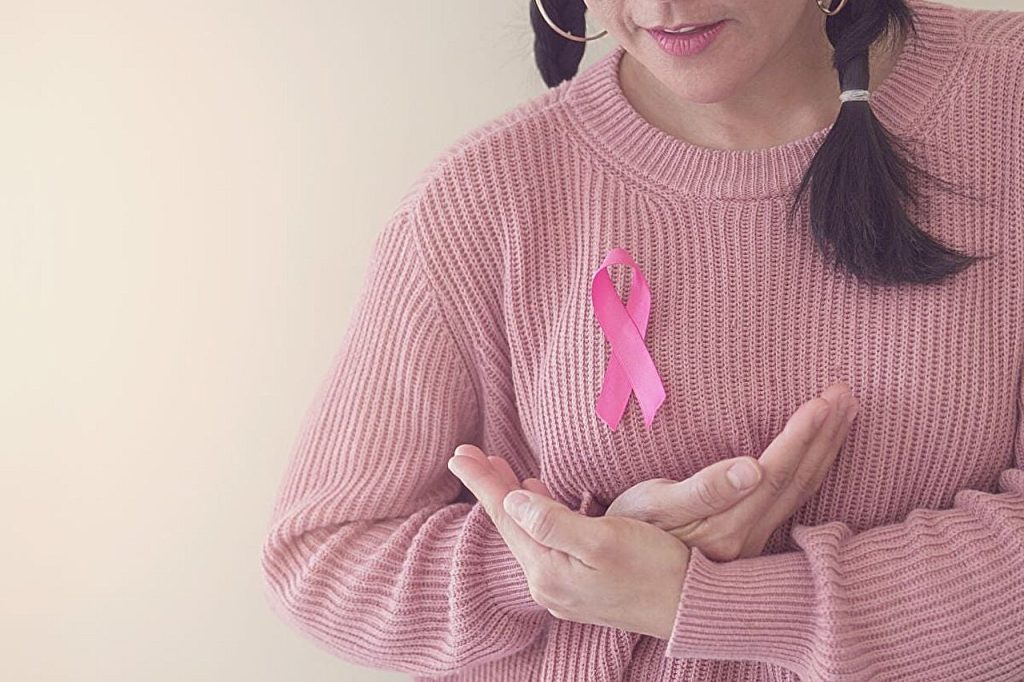Women who are diagnosed with breast cancer in one breast, even if it is in an early stage, may choose to have a double mastectomy because of the risk that the cancer may spread to the other breast.
But an exhaustive new study of more than 600,000 patients followed over two decades finds that the decision may not confer a substantial survival benefit.
Canadian researchers report that while removing the unaffected breast reduces the chance of cancer developing in that area, it does not change a patient’s chances of dying from breast cancer.
“Prevention on the other side [other breast] “Treatment of cancer with prophylactic surgery does not appear to reduce the risk of death over 20 years,” concluded the team, led by Dr. Steven Narod of Toronto’s Women’s College Hospital, and professor of obstetrics and gynecology at the University of Toronto.
His team published their findings on July 25th. JAMA Oncology.
As the researchers noted, rates of bilateral mastectomy among women with cancer in one breast have increased in recent years.
“This is despite consensus guidelines recommending against this procedure for women at average risk,” the researchers added.
Is a woman’s decision to remove her other, unaffected breast justified from a survival standpoint?
Narod’s team looked at U.S. cancer data for more than 661,000 women diagnosed with cancer limited to one breast between 2000 and 2019. The cancer is the earliest stage of breast cancer. Ductal carcinoma Primary breast cancer (DCIS) to stage 3 invasive cancer.
The study tracked the outcomes of three groups of nearly 36,000 women divided by type of treatment: one group underwent lumpectomy, the least radical type of breast cancer surgery; a second group opted for surgery to remove only the affected breast (unilateral surgery); and a third group Double mastectomy.
During 20 years of follow-up, far fewer women who had double mastectomies developed cancer in the other breast: just 97 out of about 36,000 women, compared with 766 women who had lumpectomies and 728 women who had unilateral mastectomies.
Overall, women who have had breast cancer have a low risk of later developing cancer in the other breast, less than 7 percent. This means that about 69 out of 1,000 women who have had unilateral cancer will develop cancer in the other breast within 20 years.
Surprisingly, however, the reduction in second breast cancers among women who opted for double mastectomy did not confer a benefit in terms of breast cancer survival.
The researchers found that over the 20-year study period, breast cancer death rates were similar in all groups: 3,077 deaths (8.5%) in the lumpectomy group, 3,269 deaths (9%) in the unilateral mastectomy group, and 3,062 deaths (8.5%) in the bilateral mastectomy group.
If double mastectomy reduces recurrence in the other breast, why doesn’t it improve survival?
The answer, say the Toronto team, may lie in why women with breast cancer die in the first place — usually when the cancer spreads to other parts of the body.
The new findings suggest that cancer developing in the other breast years later is rare and often a new cancer unrelated to the previous tumor — and that many of these cases could be easily treated before they spread, Narod’s team reasoned.
If cancer does develop in the other breast, it is “smaller on average” and less likely to be an aggressive form of breast cancer, the researchers noted.
In an interview with The New York Times, Narod speculated that the most common cause of death for women with breast cancer is not second breast cancer, but the spread of the initial tumor to other parts of the body.
Overall, the findings “call into question the potential for metastasis” when a new cancer develops in the other breast after treatment for the initial breast cancer, the study authors said.
Dr Seema Asha Khan and Dr Marcia Kocherginsky are breast cancer treatment experts at Northwestern University in Chicago and co-authors of an academic paper on the new research.
They called the issue of contralateral breast cancer a “complex biological conundrum.”
The researchers noted that the Toronto study found that the small number of women who developed cancer in the other breast were four times more likely to die from cancer than women whose other breast remained healthy.
Given the findings of this study, why did double mastectomy not lead to improved survival?
Kahn and Kocherginsky agreed that this is a mystery, and that certain aspects of the methodology used in the new study (and the earlier study) could help explain the discrepancy.
He also noted that many patients choose double mastectomy for reasons other than fear of the cancer coming back.
“There are certainly people who understand the risks and quality of life issues that come with bilateral agreements. Mastectomy With or without reconstruction, imaging and [mammography] Experience of breast surveillance and the burden of undergoing a second treatment breast cancer [even if highly likely to be cured],” they wrote.
For more information:
Vasily Giannakeas et al. “Bilateral Mastectomy and Breast Cancer Mortality” JAMA Oncology (2024). DOI: 10.1001/jamaoncol.2024.2212
of American Cancer Society It details treatment options for women diagnosed with breast cancer.
© 2024 Health Day. All rights reserved.
Quote: Double mastectomy may not provide survival benefit for women with breast cancer (July 26, 2024) Retrieved July 27, 2024 from https://medicalxpress.com/news/2024-07-mastectomy-survival-benefit-women-breast.html
This document is subject to copyright. It may not be reproduced without written permission, except for fair dealing for the purposes of personal study or research. The content is provided for informational purposes only.


